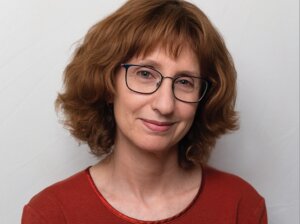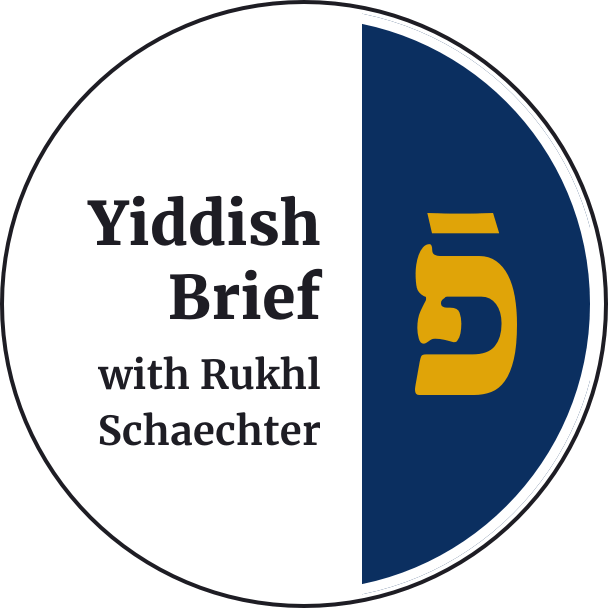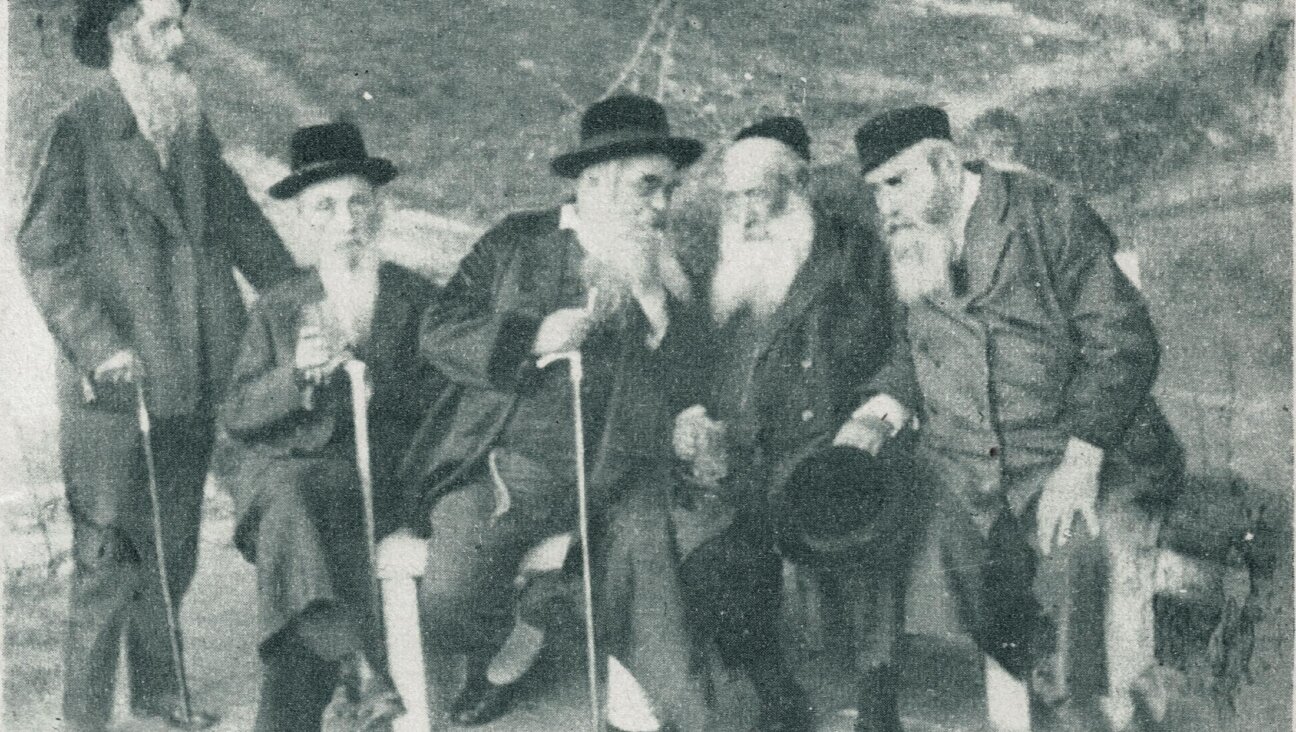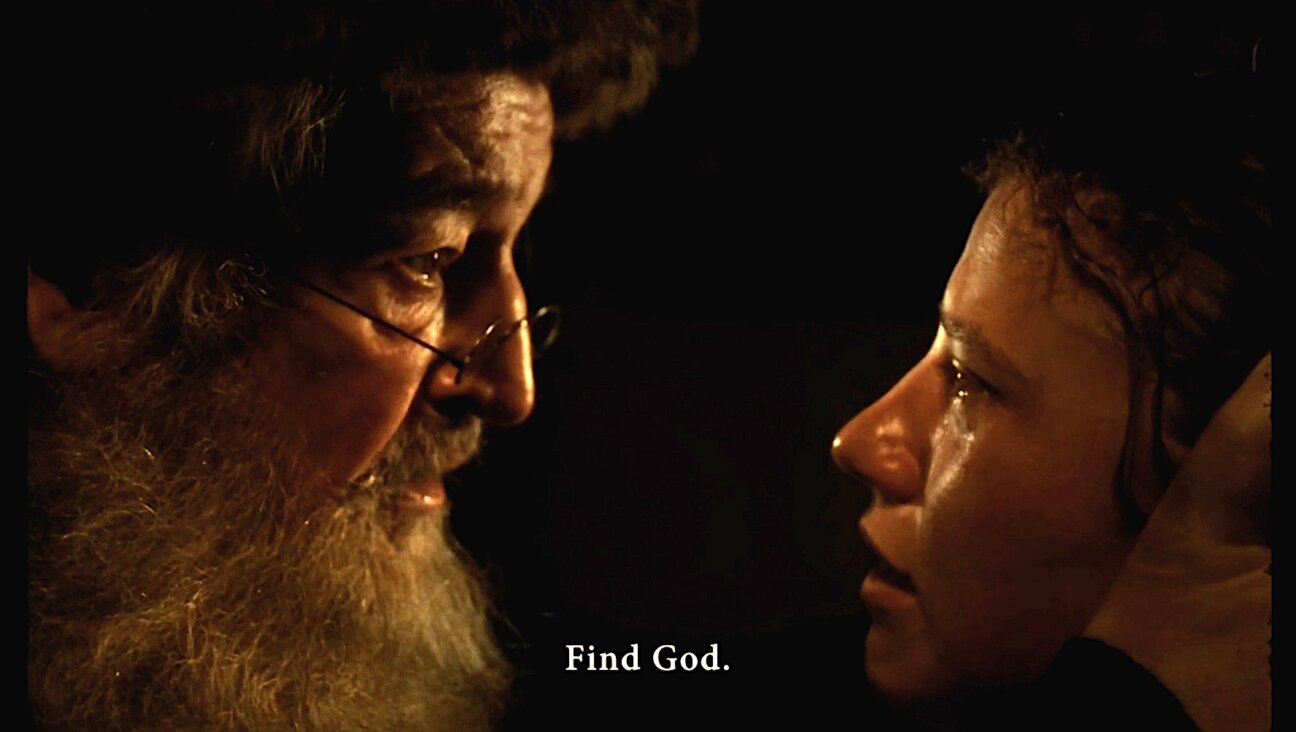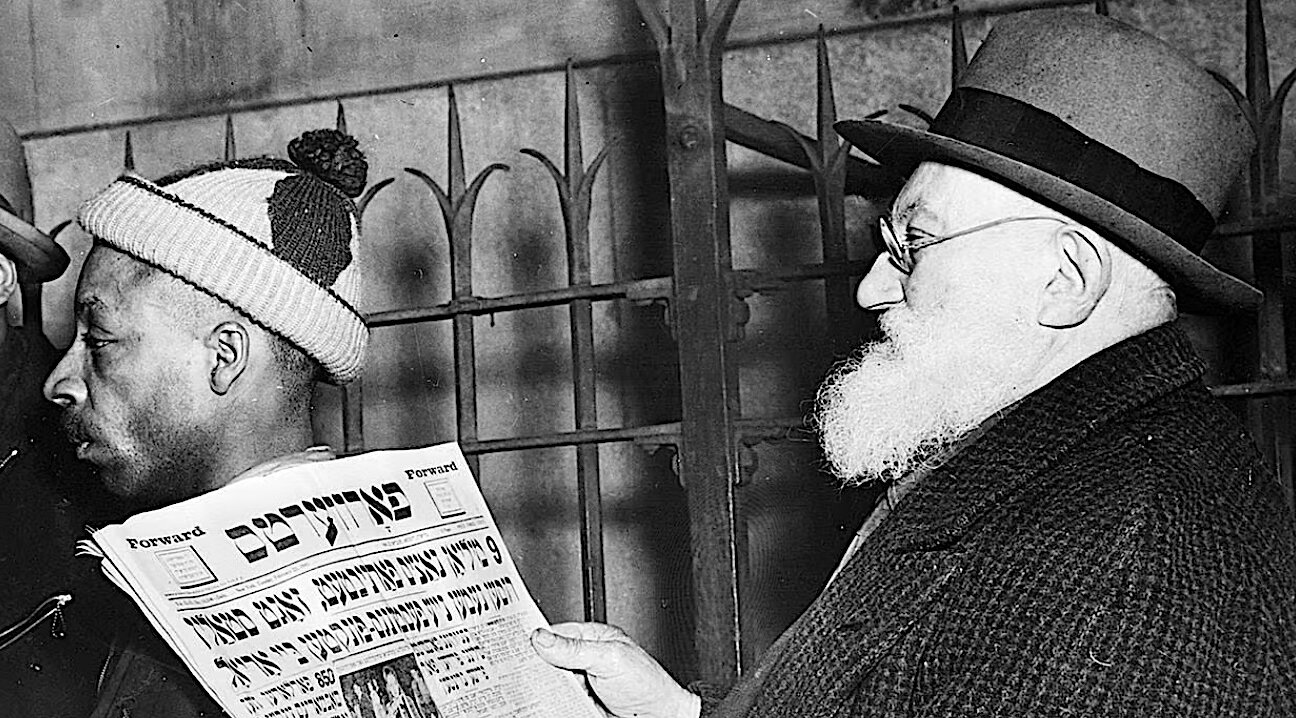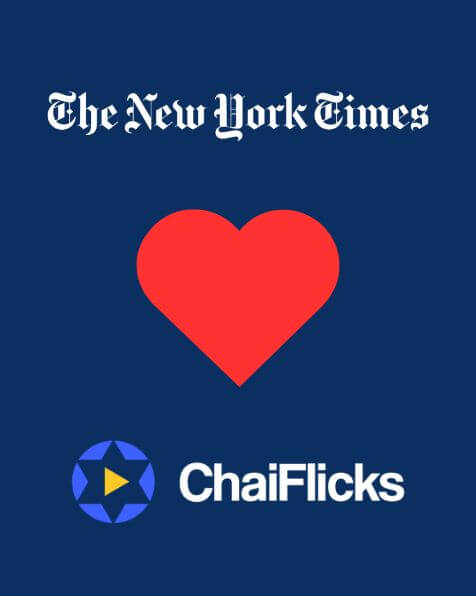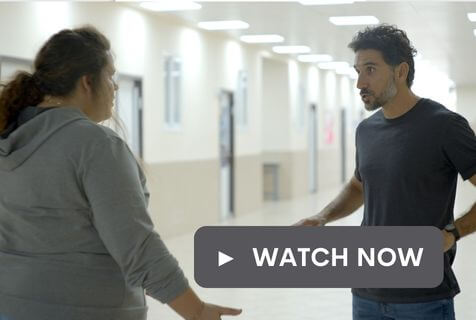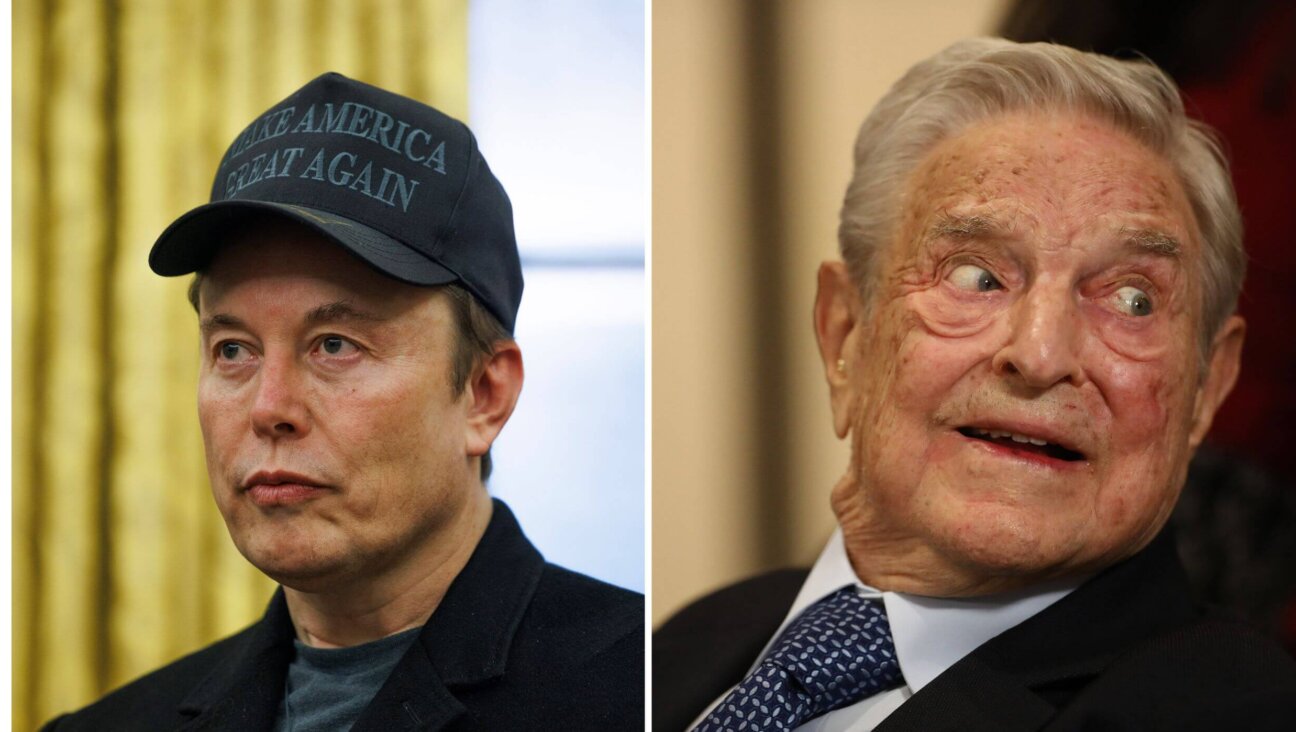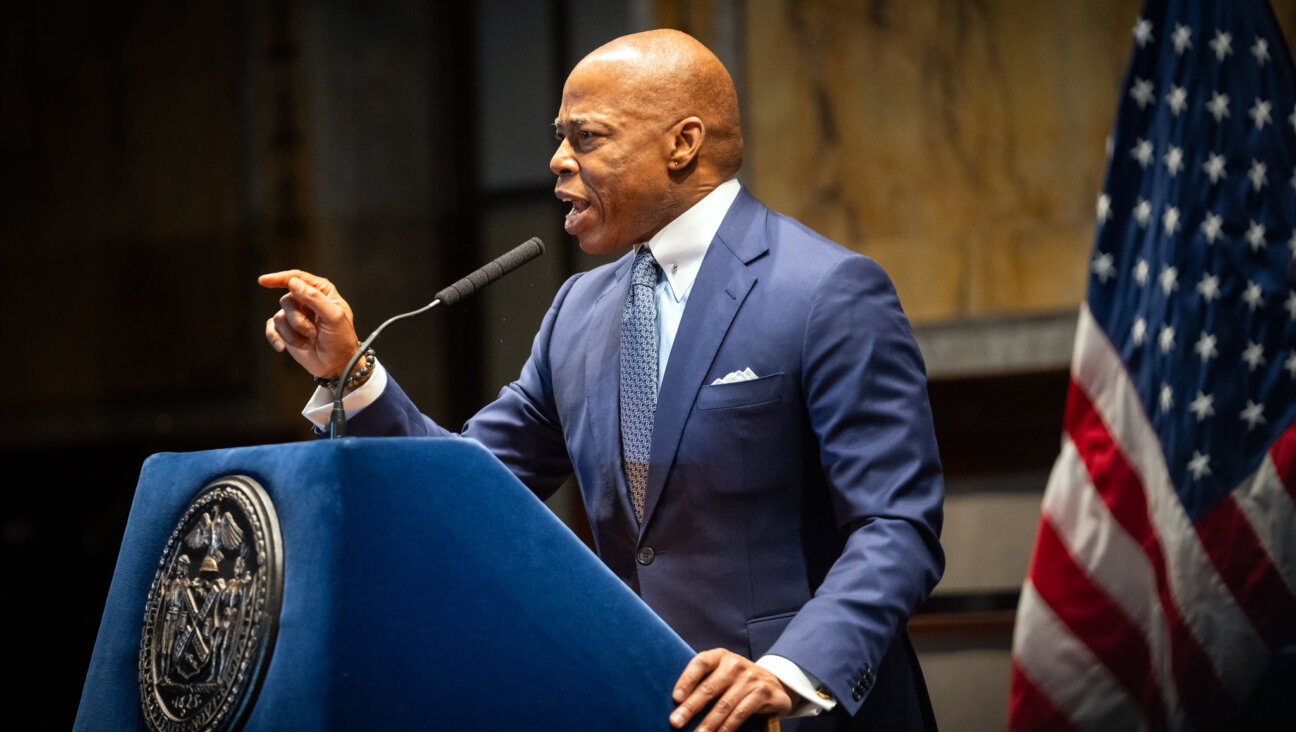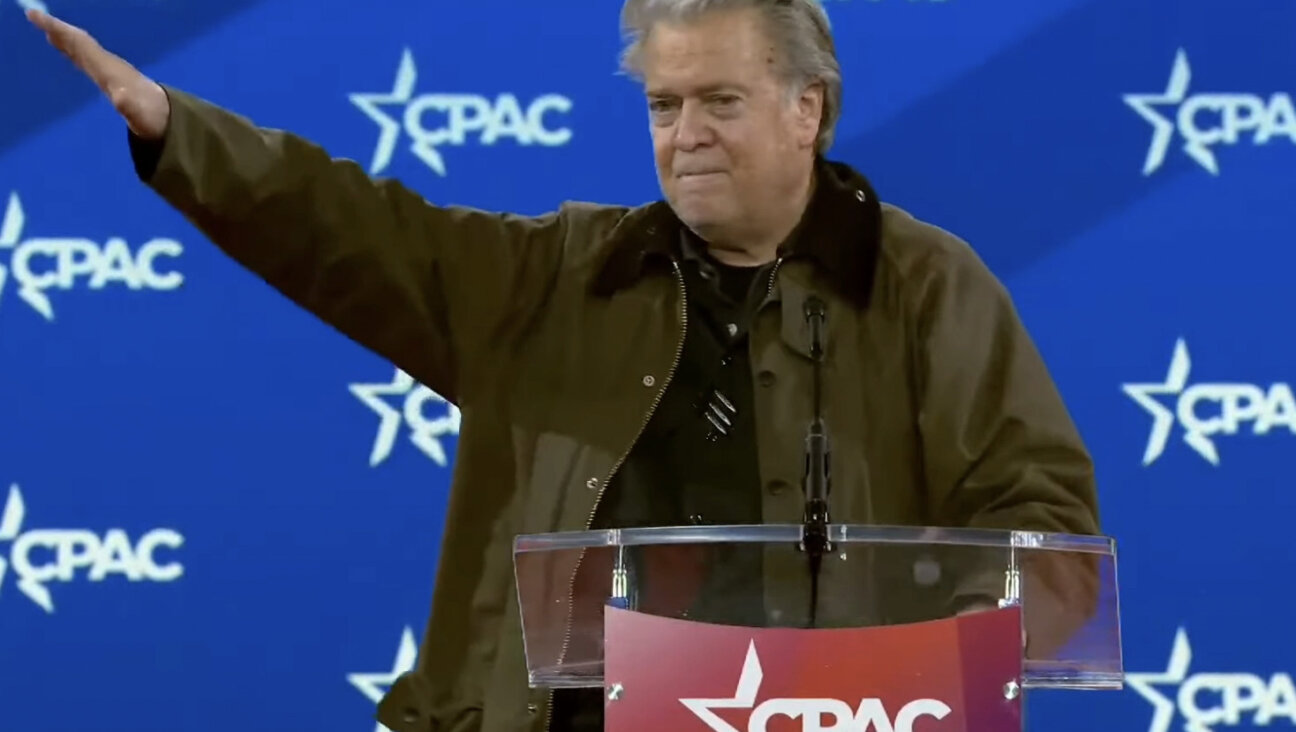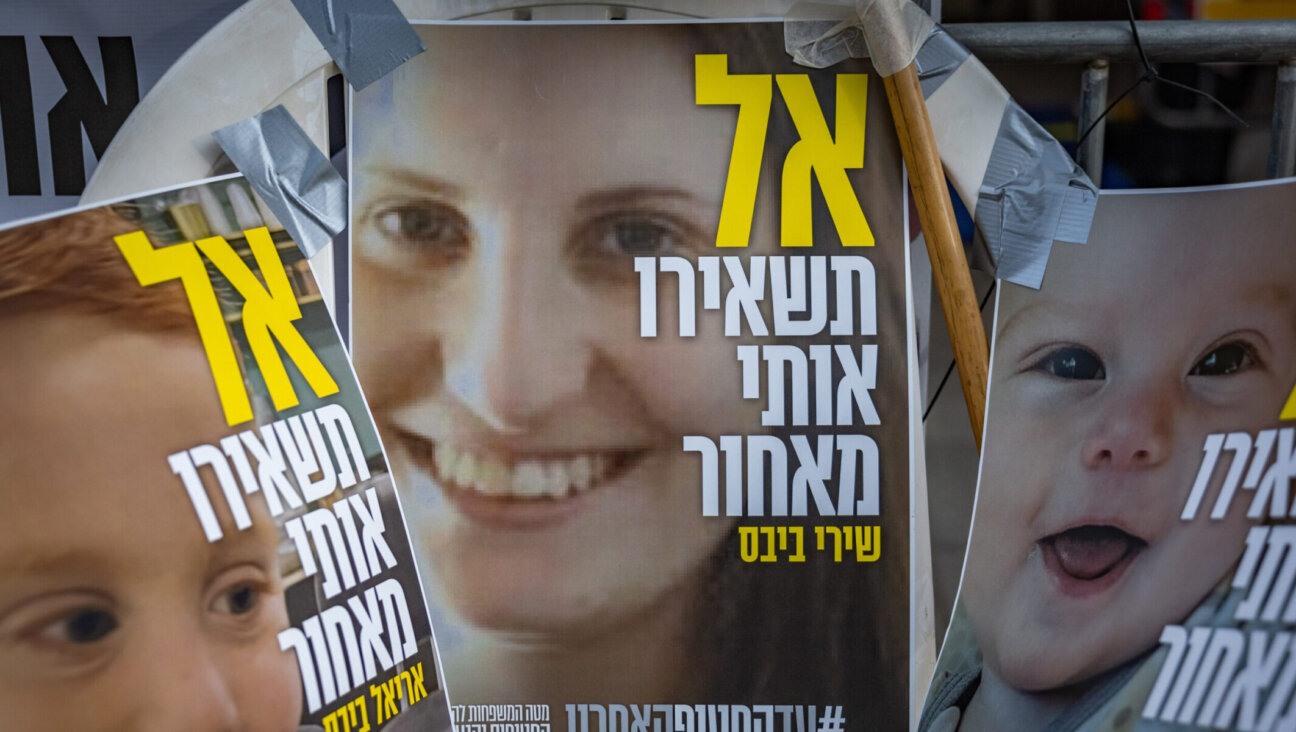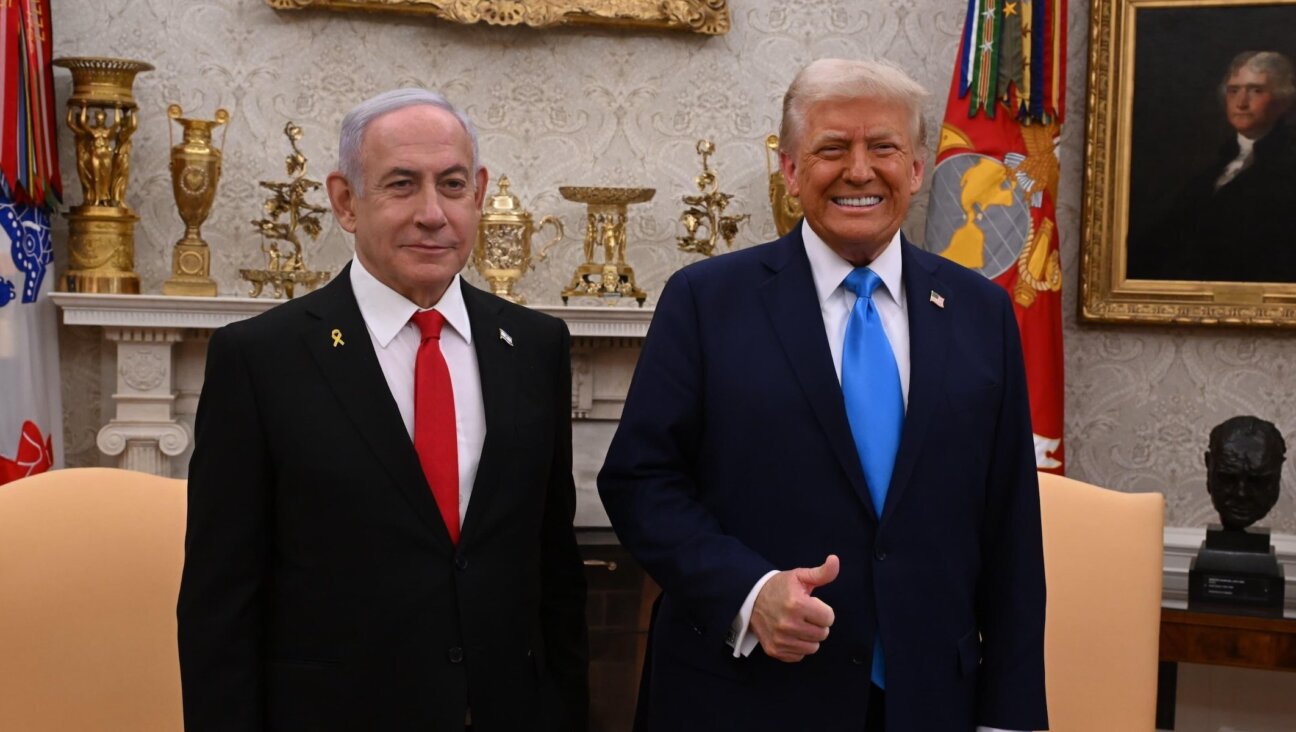A painful split in the Yiddishist community since Oct. 7
The opposing perspectives of pro-Israel and pro-Palestinian Yiddish fans has triggered anxiety and vehement arguments
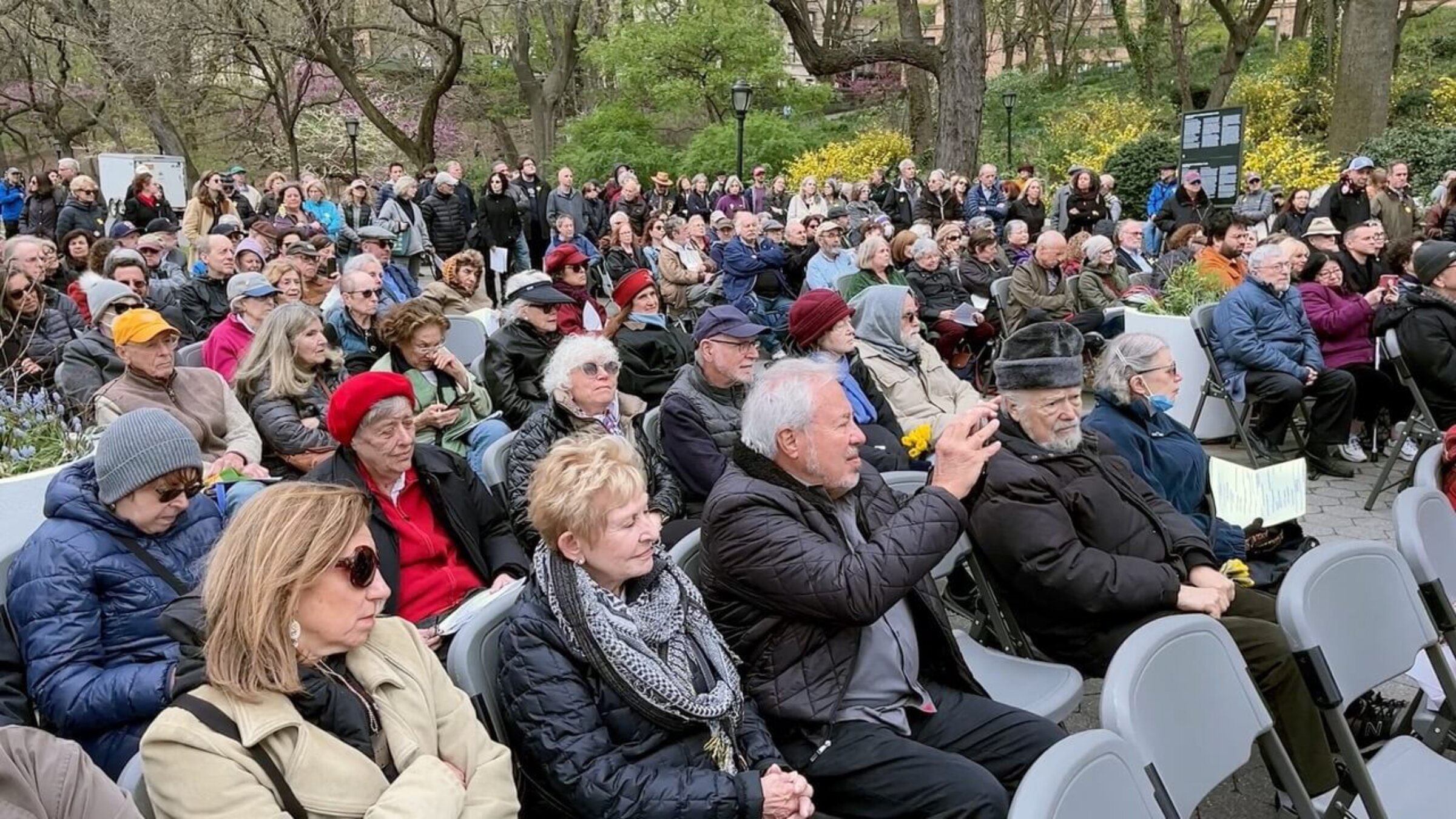
The commemoration of the Warsaw Ghetto Uprising on April 19, 2024 in Riverside Park, NY Photo by Jeff Wertz
Last year, a queer Yiddish theater collective was launched in Brooklyn and Yiddish fans were excited. Called GLYK, the group staged a string of performances, including one about Jews in space and a Purim shpiel. Starting a theater troupe — let alone a Yiddish one — is a huge financial challenge, but GLYK sold out every show it produced.
A week ago, the group posted a message on Instagram, announcing it was aligning itself with the Palestinian academic and cultural boycott of Israel, stating, “We stand in solidarity with Palestinians resisting nearly 12 months of rapidly escalating genocide following over a century of settler colonial violence and ethnic cleansing.”
Some members of the Yiddishist community told me privately they were dismayed to see this but didn’t want to go on the record, for fear of angering fellow members of the Yiddishist community.
The Instagram post wasn’t surprising, though. Since the devastating Hamas attacks on Israel and the subsequent war, there has been a sharp ideological split in the Yiddish world between those who have close ties to Israel and those who openly express more empathy with the Palestinian struggle than with the Jewish state.
YIVO accused of ‘serving as a mouthpiece for Israeli propaganda’
The split between these two world views came to the fore last January, when YIVO — the New York-based research center of the Yiddish language and Eastern European Jewry — hosted a three-part online series about the origins and ideology of Hamas. The series was well-attended, but the 99-year-old institution was immediately flooded with Instagram comments, accusing it of straying from its mission and “serving as a mouthpiece for Israeli propaganda.”
YIVO’s executive director, Jonathan Brent, and Jeffrey Herf, a historian at the University of Maryland and one of the panelists, denied that the series was pro-Zionist, or even pro-Israel, as much as it was a sober presentation about the Nazi-Islamist collaboration of the 1940s.
In truth, the disparate perspectives of the pro-Israel and anti-Zionist Yiddishists has been an issue percolating under the surface for years. After Oct. 7, both sides seem to have become emboldened in publicly expressing their views.
Poet Irena Klepfisz sees it differently. “I don’t think I’ve had a single conversation with anyone in which we used the words Zionist or anti-Zionist,” she told me in an email. “Disagreements have been around Israel’s response to the horrors of Oct. 7. No one I have spoken to has disagreed that the Oct. 7 events were a horror. But there is disagreement around the word ‘ceasefire,’ i.e. whether Israel should stop what it had been doing in Gaza. People who did not believe in a ceasefire talked about Hamas as an ‘existential threat’ and were against a ceasefire.”
Dispute about mentioning Oct. 7 at a Holocaust commemoration
Some of this tension was apparent earlier this year when the Congress for Jewish Culture was planning its annual commemoration of the Warsaw Ghetto uprising, in conjunction with the Jewish Labor Bund and three other Jewish institutions.
The tradition, which began in 1949, takes place on the anniversary of the date the uprising began, April 19, 1943, in New York’s Riverside Park, by a memorial plaque called Der Shteyn (The Rock). For years, the program, which includes Yiddish songs and poetry related to the Holocaust, drew many survivors of the Warsaw Ghetto and others who had lived through the Nazi genocide. Now that most of the survivors have died, organizers and attendees include the children of those survivors (now themselves in their 60s and 70s) and other Yiddish cultural activists.
As Shane Baker, the director of the Congress for Jewish Culture, told the Forverts, one committee member at the planning session in April suggested that the program open with a statement about “the pogrom on Oct. 7,” calling it “the greatest massacre of Jews since the Holocaust.”
Although most committee members agreed that was appropriate some felt uneasy about it because they wanted everyone in the audience to feel comfortable at the commemoration. “We felt it might be inflammatory towards the more left wing side of our audience, who also tend to be younger and are likely the future organizers of the event,” Baker said.
In fact, after the meeting, one activist who was not on the committee said he planned to show solidarity with Palestinians at the event. Klepfisz, whose father Michl Klepfisz was a hero of the Warsaw Ghetto uprising, decided to talk him out of it. “I had at least three conversations with him about how ill-advised this plan was and disrespectful. He finally agreed to drop it,” she said.
“We had three choices,” Klepfisz said. “We could mention the victims of Oct. 7; we could mention both the Jewish victims of Oct.7 and the Palestinian victims of Gaza, or we could mention neither. We ended with the last.”
While agreeing that the compromise was necessary, Baker told me that he was frustrated that the organization couldn’t speak about the situation, since they had spoken about other current conflicts in the past. He recalled that the late Yiddish actress Luba Kadison Buloff used to send Rosh Hashanah cards each year with the words “Zol zayn sholem af der velt un in yisroel” (“Let there be peace in the world and in Israel”). “Thirty years ago, I wondered why she added the phrase ‘in Israel’ if she had already wished for peace in the world. I guess Israel needs special prayers,” Baker said.
Anti-Zionist Yiddishists say the Bund was anti-Zionist just like them
Many pro-Palestine activists say they are reclaiming the legacy of the Jewish Labor Bund, which was anti-Zionist. When the Bund was established in Eastern Europe in 1897, its leaders did indeed dismiss the Zionist notion of building a Jewish state, perceiving it to be an exercise in futility. Instead, they promoted the idea of doikeyt (here-ness) — that Jews remain in their own countries and fight for their rights as Jews.
The Bund remained anti-Zionist until World War II. “But in 1955, after the birth of the state of Israel, the Bund adopted a stance saying that ‘Israel is a significant factor in Jewish life’ even if the Bund insisted that Jews remain a world people and continued to reject Zionist premises as incompatible with its own,” said Kalman Weiser, a historian at York University in Toronto.
“I understand that people are upset with the Israeli military’s response to the Hamas attack,” Baker said. “I understand that they could be pro-Palestine. I just don’t see how a Jew could say: ‘From the river to the sea, Palestine will be free.’ There are lots of Jews living in Israel. Without Israel, where are they supposed to go?”
Some registrants to Yiddish events express anxiety
The anticipation of ideological clashes between pro-Israel and anti-Israel Jews has made some people nervous when registering for Yiddish events. This past August, before the annual Yiddish immersion week in Copake, New York, known as Yiddish Vokh, some registrants told me they were worried that certain participants might organize a pro-Palestine rally or put on kaffiyehs as a political statement. One long-time Yiddish Vokh attendee told me that if he saw one kaffiyeh, he wouldn’t hesitate to put on his MAGA hat.
In the end, nothing happened.
A week later, though, according to klezmer musician and scholar Lorin Sklamberg, some young people attending the annual Yiddish cultural festival Klezkanada in Quebec wore kaffiyehs throughout the week, and there were several displays of solidarity with the Palestinian cause. Sklamberg didn’t hear anyone complaining about this.
But on the Friday afternoon of the festival, as participants engaged in a pre-shabbos ritual dating back to shtetl days — marching to the edge of a small town representing an Eastern European shtetl, and then walking backwards into the town to greet the Sabbath bride — one of the marchers unfurled an Israeli flag and wrapped herself in it.
“It was definitely provocative,” Sklamberg said. “People don’t go around carrying full-size flags in their bags, so she must have thought about it ahead of time. A big symbolic display like that doesn’t help us work through these issues. It makes things worse.”
“I grew up in a Conservative shul and Hebrew school in a suburb of LA and was handed the Zionist belief system without any sort of discussion or connection,” Sklamberg said. “Everything was about Israeli culture and the Hebrew language, while the Yiddish language and culture — which is really my birthright and heritage — were pushed aside. I had to learn all that for myself and am still learning. So I kind of understand this rejection of Israel in general.”
The tension may be magnified by social media
Yiddish cultural critic Rokhl Kafrissen believes that the increasing tension between pro-Israel and anti-Israel Yiddish cultural activists has been exacerbated by social media.
“Many people are venting their frustrations on their news feeds, no matter what side they’re on, and that tension spills over when they then see each other in person,” she said. “And because of the algorithm, it tends to show you more inflammatory things. So while you might usually be open to listen to different points of view and wouldn’t immediately cut yourself off from people you disagree with, you start to consume media that scares and angers you. It’s addictive and polarizing.”
But Weiser, the historian, says he’s seen all this before. “Yiddish was used in various ways over the past two centuries, as in two Yiddish-speaking Jews claiming ownership over different ideologies and not talking to each other,” he said. “The communist and socialist Yiddishists, for example, hated each other. Yet today, their grandchildren, if they identify as Jews, may be married to each other and don’t even remember what it was all about.”
A message from our Publisher & CEO Rachel Fishman Feddersen

I hope you appreciated this article. Before you go, I’d like to ask you to please support the Forward’s award-winning, nonprofit journalism during this critical time.
At a time when other newsrooms are closing or cutting back, the Forward has removed its paywall and invested additional resources to report on the ground from Israel and around the U.S. on the impact of the war, rising antisemitism and polarized discourse.
Readers like you make it all possible. Support our work by becoming a Forward Member and connect with our journalism and your community.
— Rachel Fishman Feddersen, Publisher and CEO



